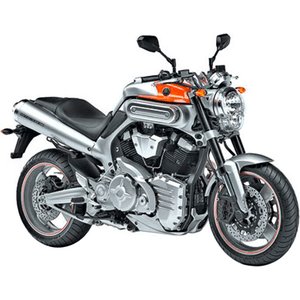Yamaha MT-01 (2005-2006): A Torque-Centric Masterpiece Revisited
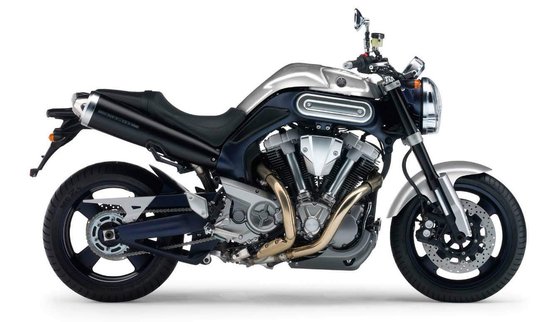
Introduction: The Birth of Torque Sports
When Yamaha unleashed the MT-01 in 2005, it wasn’t just launching another motorcycle—it was declaring war on convention. Built around a gargantuan 1,670cc air-cooled V-twin engine, the MT-01 redefined what a "naked bike" could be. Two decades later, its legacy as the progenitor of the "Torque Sports" category remains unchallenged. This is a motorcycle that prioritizes visceral sensation over spreadsheet specs, and after a day in the saddle, you’ll understand why it still commands cult-like admiration.
Let’s dissect why this brute of a machine continues to resonate with riders who crave raw, unadulterated motorcycling.
Design Philosophy: Minimalist Frame, Maximalist Engine
A Chassis Built to Showcase Power
Yamaha’s goal was clear: let the engine dominate. The MT-01’s aluminum CF die-cast frame is a masterclass in minimalism. With no visible welds and a truss-style swingarm borrowed from the YZF-R1, the chassis is both a structural marvel and a stage for the V-twin centerpiece. The frame’s rigidity translates to precise cornering, while its slim profile (790mm/31.1in width) ensures the rider feels connected to the road.
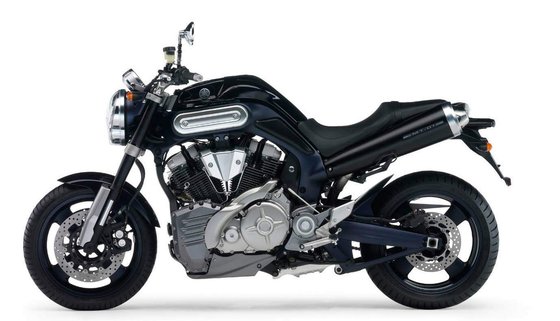
Retro-Futuristic Aesthetics
The MT-01’s design is a paradox—muscular yet sleek, industrial yet artful. The staggered dual exhausts, ceramic-composite cylinders, and finned engine covers nod to classic air-cooled engines, while the inverted forks and radial brakes scream modernity. The 825mm (32.5in) seat height is approachable, though the 240kg (529lbs) dry weight reminds you this isn’t a featherweight.
Engine Performance: The Heartbeat of the Beast
Torque That Rewires Your Brain
At the core of the MT-01 lies its 1,670cc V-twin, producing 150.1 Nm (110.7 lb-ft) of torque at just 3,750 RPM—numbers that rival modern cruisers. Unlike high-revving inline-fours, this engine’s personality is immediate. Crack the throttle at any RPM, and the MT-01 lunges forward with a primal growl, its 90HP feeling exponentially fiercer thanks to the torque’s sledgehammer delivery.
Engineering Nuances
- Air Cooling Done Right: Thick cooling fins and a lower aluminum duct keep temperatures in check, avoiding the complexity of liquid cooling.
- EXUP Valve: Borrowed from Yamaha’s sportbikes, this exhaust power valve eliminates flat spots, ensuring smooth power from idle to redline.
- Hydraulic Lifters: Maintenance is simplified with self-adjusting valves, a rarity in pushrod engines.
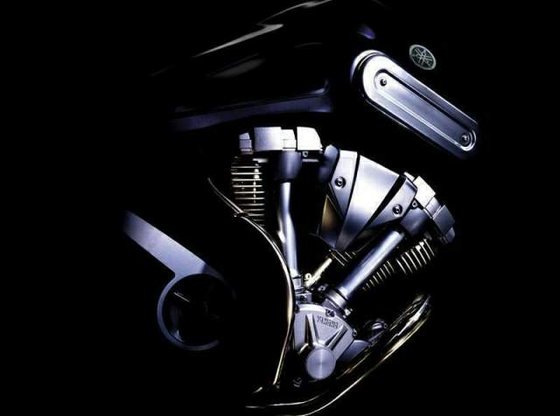
Riding Experience: Sensory Overload, Refined
Urban Dominance
In city traffic, the MT-01 is surprisingly manageable. The hydraulic clutch requires minimal effort, and the tall gearing (5-speed transmission) means second gear suffices for most speeds. The upright riding position offers clarity in tight spaces, though the 15L (3.96-gallon) fuel tank demands frequent stops if ridden hard.
Open-Road Majesty
On highways, the MT-01 transforms. The torque curve lets you short-shift into fifth gear, where 120km/h (75mph) feels like a relaxed cruise. Windblast becomes noticeable above 140km/h (87mph), but the bike’s stability is unshakable. Its claimed 207.6km/h (129mph) top speed is academic—this engine thrives in the midrange.
Twisties: A Gentle Giant
Don’t let the 190/50-ZR17 rear tire fool you; the MT-01 isn’t a canyon carver. Yet, it’s far from sluggish. Fully adjustable suspension (120mm/4.7in front travel, 117mm/4.6in rear) allows tailoring for aggressive rides. The R1-derived radial brakes (dual 320mm discs up front) provide stoppage worthy of a liter bike.
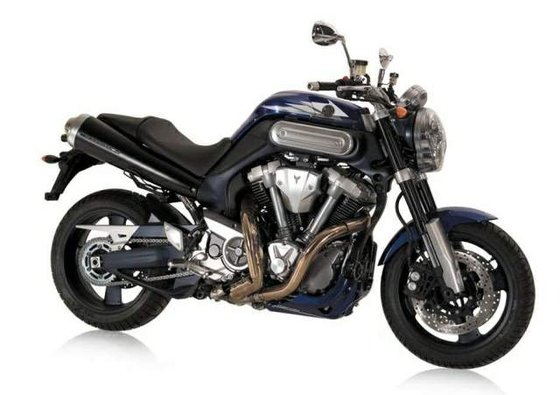
Handling and Braking: Confidence in Complexity
Suspension Tuning
The 43mm inverted forks and horizontal rear shock offer 20-25 clicks of adjustability. Dial in more rebound damping for spirited riding, or soften the setup for touring. The 1525mm (60in) wheelbase ensures stability, though low-speed U-turns require muscle.
Braking Performance
Brembo-style radial calipers bite with authority, offering progressive feedback. The rear 267mm disc is adequate, though most braking is handled by the front.
Competition: How the MT-01 Stacks Up
Ducati Monster S4R (2004-2006)
- 998cc Desmodromic L-Twin: Higher-revving (92HP @ 8,750RPM) but lacks the MT-01’s low-end grunt.
- Lighter at 189kg (417lbs): More agile but less stable at speed.
- Verdict: The Monster appeals to purists; the MT-01 to torque addicts.
Suzuki TL1000S (1997-2001)
- 996cc V-Twin: Raw and unforgiving, with abrupt power delivery.
- Carbureted vs. Fuel-Injected: The MT-01’s FI system offers smoother throttle response.
- Verdict: The TL1000S is a hooligan; the MT-01 is a refined brute.
Honda VTX1800 (2002-2008)
- 1,795cc V-Twin: Comparable torque (156Nm) but in a 329kg (725lb) cruiser package.
- Verdict: The VTX is a straight-line specialist; the MT-01 balances muscle with agility.
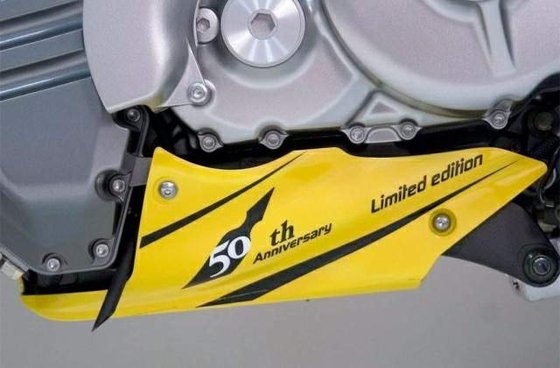
Maintenance: Keeping the Beast Alive
Key Considerations
- Oil Changes: Use SAE20W-40 oil (5L/1.3gal capacity). The dry sump system requires checking oil levels on the sidestand.
- Valve Adjustments: Hydraulic lifters eliminate manual adjustments—a major plus.
- Chain Care: The O-ring chain needs regular lubrication (every 500km/310mi).
- Tire Pressures: 2.5Bar (36psi) front / 2.9Bar (42psi) rear for optimal grip and wear.
MOTOPARTS.store Upgrades
- Exhaust Systems: Swap the stock mufflers for a lighter, throatier aftermarket setup.
- Suspension Upgrades: Progressive springs or a premium rear shock improve ride quality.
- Ergonomics: Gel seats or adjustable footpegs enhance long-distance comfort.
Conclusion: A Timeless Torque Titan
The Yamaha MT-01 isn’t for everyone—it’s too audacious, too unapologetically niche. But for riders who value character over conformity, it’s a revelation. Its engine isn’t just a powerplant; it’s a mechanical symphony. The chassis balances heft with precision, and the design remains striking years later. In an era of homogenized motorcycles, the MT-01 stands as a testament to Yamaha’s willingness to take risks.
Whether you’re hunting for OEM replacements or performance upgrades, MOTOPARTS.store has the parts to keep your MT-01 pounding for decades. Because some legends deserve immortality.
Specifications sheet
| Engine | |
|---|---|
| Stroke: | Four-stroke |
| Max power: | 66 kW | 89.0 hp |
| Max torque: | 150 Nm |
| Fuel system: | Fuel Injection (Mikuni AC40 twin-bore) |
| Max power @: | 4750 rpm |
| Spark plugs: | NGK DPR7EA-9 or NGK DPR7EIX-9 |
| Displacement: | 1670 ccm |
| Max torque @: | 3750 rpm |
| Bore x Stroke: | 97.0 x 113.0 mm (3.8 x 4.4 in) |
| Configuration: | V |
| Cooling system: | Air-cooled |
| Spark plug gap: | 0.9 |
| Compression ratio: | 8.36:1 |
| Lubrication system: | Dry sump |
| Number of cylinders: | 2 |
| Valves per cylinder: | 4 |
| Dimensions | |
|---|---|
| Wheelbase: | 1525 mm (60.0 in) |
| Dry weight: | 240 |
| Wet weight: | 265 |
| Seat height: | 825 mm (32.5 in) |
| Overall width: | 790 mm (31.1 in) |
| Overall height: | 1160 mm (45.7 in) |
| Overall length: | 2185 mm (86.0 in) |
| Ground clearance: | 140 mm (5.5 in) |
| Fuel tank capacity: | 15 L (3.96 US gal) |
| Drivetrain | |
|---|---|
| Final drive: | chain |
| Chain length: | 114 |
| Transmission: | 5-speed, wet multiple-disc clutch |
| Rear sprocket: | 39 |
| Front sprocket: | 17 |
| Maintenance | |
|---|---|
| Engine oil: | SAE 20W-40 |
| Idle speed: | 900 ± 50 RPM |
| Brake fluid: | DOT 4 |
| Valve clearance: | Hydraulic lifters (no manual adjustment required) |
| Forks oil capacity: | 1.2 |
| Engine oil capacity: | 5.0 |
| Recommended tire pressure (rear): | 2.9 bar (42 psi) |
| Recommended tire pressure (front): | 2.5 bar (36 psi) |
| Additional Features | |
|---|---|
| Wheels: | 4-spoke magnesium alloy (3.50x17 front, 6.00x17 rear) |
| Exhaust: | Titanium 2-into-1-into-2 system with EXUP valve |
| Ignition: | Digital TCI |
| Security: | Immobilizer ignition system |
| Instrumentation: | Analog tachometer, digital speedometer, adjustable backlighting |
| Chassis and Suspension | |
|---|---|
| Rake: | 27° |
| Frame: | Aluminum CF die-cast sports frame with R1-type subframe |
| Trail: | 103 mm (4.1 in) |
| Rear tire: | 190/50 z-17 (73w) |
| Front tire: | 120/70 z-17 (58w) |
| Rear brakes: | 1 x 267 mm disc, 1-piston caliper |
| Front brakes: | 2 x 320 mm discs, 4-piston radial calipers |
| Rear suspension: | Fully adjustable monoshock with linkage |
| Front suspension: | 43mm inverted telescopic fork, fully adjustable (preload, compression, rebound) |
| Rear wheel travel: | 117 mm (4.6 in) |
| Front wheel travel: | 120 mm (4.7 in) |



